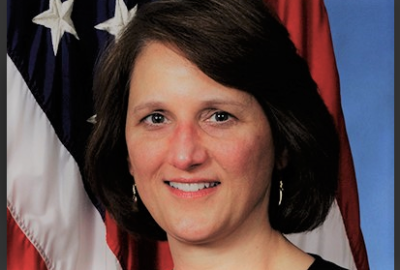
What it takes to keep federal technology transfer going
Federal News Network concludes its series on the Federal Lab Consortium and the business of federal tech transfer with a look at the operational arm that keeps it...
Best listening experience is on Chrome, Firefox or Safari. Subscribe to Federal Drive’s daily audio interviews on Apple Podcasts or PodcastOne.
We conclude our series on the Federal Lab Consortium and the business of federal tech transfer with a look at the operational arm that keeps it all going. It’s called the TechLink Center, and it’s housed at Montana State University. Federal Drive with Tom Temin talked about it with the Center’s new executive director Brett Cusker.
Interview transcript:
Tom Temin: Mr. Cusker, good to have you on.
Brett Cusker: Very pleased to be here, thank you.
Tom Temin: And we should begin with your own background. You are a retired Air Force Colonel, and you were in the tech transfer business for the military somewhat before coming over here. Tell us a little bit about yourself.
Brett Cusker: Thank you. Yep, I have served 25 years in the Air Force and ended up in the acquisition community finishing my career at the Air Force headquarters level and running command and control system acquisition. And that’s what got me connected to the technology transfer world, as well as the Small Business Innovation Research world. So coming out of this service, was looking for employment and found an opportunity here with TechLink, as the doodies primary partner for technology transfer, made an application and very thankfully got hired a few years ago, and then took over as executive director, as you mentioned recently.
Tom Temin: And you’re in some beautiful territory, we might also add. But tell us about the TechLink Center. What specifically does it do and which federal labs does it do it with?
Brett Cusker: So the MSU TechLink Center is a part of the Montana State Universities system Montana State is a land grant university of the state of Montana and all land grant colleges have an economic development mission. So MSU was defined as a Center for Economic Development back in 1996. And our first federal partner actually was NASA. And we were helping them connect with industry partners, regionally, the success that we saw there, got us noticed by the Department of Defense, and we have been the DVDs primary partner for industry outreach nationwide since 1999. And so our main purpose is to find those small, non traditional companies out there that could benefit from licensing intellectual property that the Department of Defense has patented. And we are experts in the field of licensing all my folks, I’ve certified licensing professional credentials, and most of them have patents in their own right. So we have a very, very experienced group of people here that know the art of licensing federal DoD property, intellectual property, as well as the Department of Veterans Affairs.
Tom Temin: I almost want to ask you how the sushi is in Montana, because when you think of startup innovation companies, you would think they’re all on the coasts. And yet you’re in Montana, trying to find these companies. How does it work in a day to day sense?
Brett Cusker: Yeah, so day to day what we have is a really aggressive marketing outreach campaign that’s centered. Really on our website, it’s techlinxcenter.org, where you can go and find all of the available intellectual property for the Department of Defense, as well as what’s available through the Department of Veterans Affairs in one place. We are the only location that entrepreneurs can go to, and search for intellectual property that might help them in their business development efforts. And we love to promote the opportunity that tech transfer gives because through tech transfer, businesses of all sizes have partnered with the Department of Defense and VA labs, using their intellectual property that significantly cuts time and resources from their own R&D efforts and has successfully brought new products and services to market with speed and efficiency.
Tom Temin: And I want to say that as someone who has a kid read the Lafayette radio catalogue at night, your site is really a cornucopia of various technologies. I’m looking at high performance PCB based Yageo capacitor for greater than 100 watt applications, overlapping vein mufflers, small low power solar radiometers. I mean, this is real stuff you’ve got listed here. These are available for licensing – in other words.
Brett Cusker: that’s absolutely correct. And licensing terms can vary based on the company needs. So one of the things that my folks have been successful in doing is not only explaining and cord connecting interested licensees with the laboratory and the inventors themselves, but also creating a really unique strategy for how to license that intellectual property, whether it be an exclusive license for all fields of use, or a partial exclusive license or a non exclusive license, every case is different. Every agreement is different. And at the end of the day, what TechLink is doing and why the department offense has paid us to do this. We don’t take any money from any of these deals were paid for by the Department of Defense and the VA to help broker win-win agreements as a center of excellence really an experts that understand the licensing ins and outs, as well as the opportunity that that license offers to both the government and that industry partner.
Tom Temin: We were speaking with Brett Cusker. He’s executive director of The TechLink Center at the Montana State University. And what makes a good outfit, startup or maybe an established company, to be a place to which you can transfer technology? How do you know, hey, this is a great place?
Brett Cusker: So we have worked with businesses large and small. What’s really interesting about federal tech transfer as envisioned, through the enabling legislation back in the 80s assistance, and wildland vital acts was, there was a desire by Congress to connect with non traditional small entrepreneurial companies in order to see these basic research advancements within the Department of Defense and federal laboratory system, find a home and connect with those small, innovative, agile companies that can take this baseline technology, further develop it into something that’s commercially viable, or in the case of the Department of Defense, something that will provide a capability that doesn’t currently exist within the department and reduces the overall cost of innovation for both the Department of Defense and that industry partner. So in terms of companies, we see about 95% of our companies are small, or very small, we’re talking less than 100. employees, several are startups, as you mentioned, even less than 10. And these are people that have an idea and drive a capability and a capacity and maybe even a track record of success of licensing intellectual property. A key piece of their application is a commercialization plan. It’s part of the requirements to license federal intellectual property, there has to be a commercialization plan, the expectation is that licensee will actually do something with the innovation. And so our team here at TechLink will help that licensing, or that firm actually write their commercialization plan so that there’s good confidence on the government side that this licensee will take the innovation and do something with it and be successful.
Tom Temin: And can more than one company license a particular technology?
Brett Cusker: That’s an excellent question. And the answer is yes. And as I mentioned earlier, there’s lots of different flavors of licenses, you can have an exclusive license for all field of use, which would mean that nobody else is going to be able to take that invention and do something with it. You could have an exclusive license for certain fields of use, you can have a partial exclusive license and a non exclusive license. There’s lots of different resources through the technology transfer tools that Congress has given our country for really tailoring the kind of licensing agreement that makes the most sense to that industry partner, as well as the government agency that owns that IP.
Tom Temin: And can licenses cross domains from which the original technology came or was intended, I’m looking at something here a adjustable clamp device for aircraft, pretty nifty little gadget. The idea here is adjustable clamp that can be mounted to aircraft. And you can route wires and do different things without the need for adhesive. You can do it with a simple screwdriver if I’m looking at this, right. But maybe something not connected to aircraft could use the same type of clamp, maybe a car with a lawnmower.
Brett Cusker: That’s very observant. And you’re exactly right. We’re seeing multiple uses for innovation, it may have been a desire by the Department of the Navy, for example, to create a baseline capability that addresses a very specific problem to the maritime environment. But that innovation very well could be a solution in another domain as well. And so yes, we see a lot of different applications and of these innovations going in directions maybe that that researcher that Principal Investigator didn’t even realize it could go to and there’s been a lot of excellent success in that cross domain area.
Tom Temin: And do you ever walk through, say an airport or through a factory or somewhere and say, golly, I helped license that?
Brett Cusker: Yeah, in fact, there are several interventions that have come out of DoD labs that are in practical use on a day to day basis, whether it’s cargo loader at that airport, or even different manufacturing capabilities and carts, just it kind of runs the gambit, anything that you can think of in any kind of genre, the Defense Department and the Department of Veterans Affairs is probably researching the next great advancement.
Tom Temin: And you have metrics on the annual value to the government of the tech transfer licensing agreements.
Brett Cusker: We sure do. In fact, if you go to the techlinkcenter.org, we have an impacts page that unpacks the impact of technology transfer for the Department of Defense and other federal agencies that we have supported asking that very question has there been a return on investment and does this work and so if the very thankfully my organization has been researching the success of technology transfer through an economic impact studies since 2009, and we are renewing for the third time licensing impact study just this year, so we’re keeping a running total of the six They have not only the licensees, but the interventions and the innovations that are coming out of the Defense Department. It’s a very significant success story, not only for our own organization, but certainly demonstrating that the intention of tech transfer is meeting and exceeding the expectations that were set all the way back in the 1980s.
Tom Temin: Order of magnitude – is it millions, tens of millions, billions a year?
Brett Cusker: Billions, yes. It has been billions of dollars worth of impact across all these different licenses over time.
Tom Temin: Well, I’m hoping to license the Vulcan Fire Torch. I don’t know what that is, but it sounds like a lot of fun. Brett Cusker is executive director of the TechLink Center at Montana State University. Thanks so much for joining me.
Brett Cusker: Well, thank you. It’s a pleasure to be here with you today.
Copyright © 2025 Federal News Network. All rights reserved. This website is not intended for users located within the European Economic Area.
Tom Temin is host of the Federal Drive and has been providing insight on federal technology and management issues for more than 30 years.
Follow @tteminWFED





